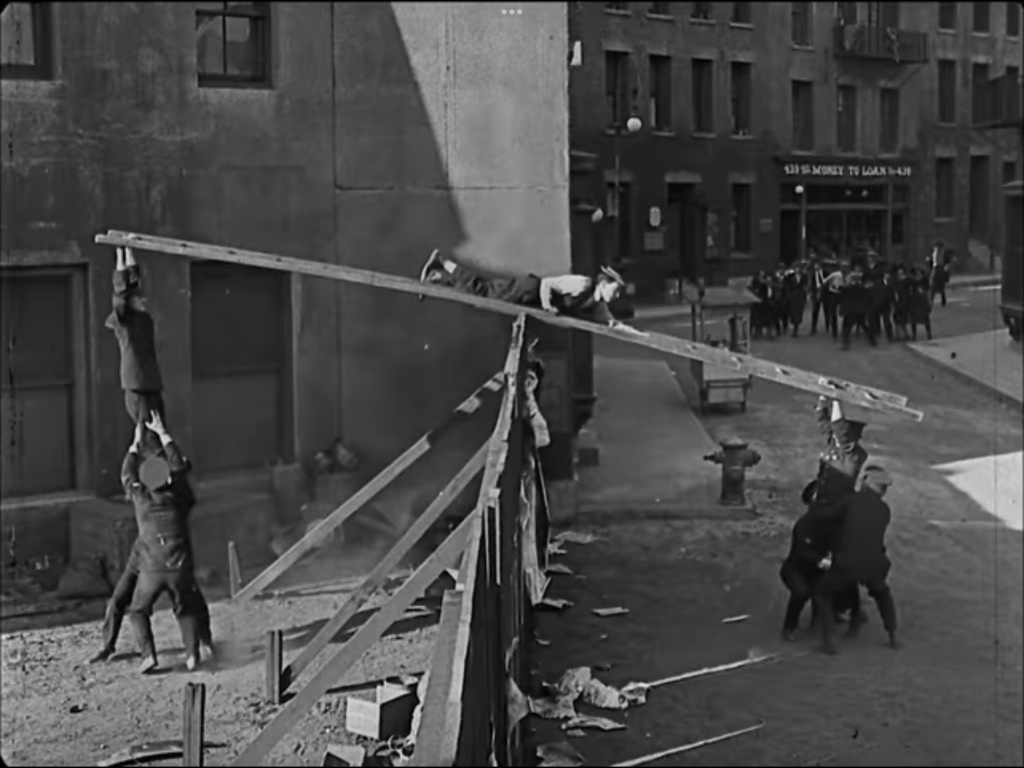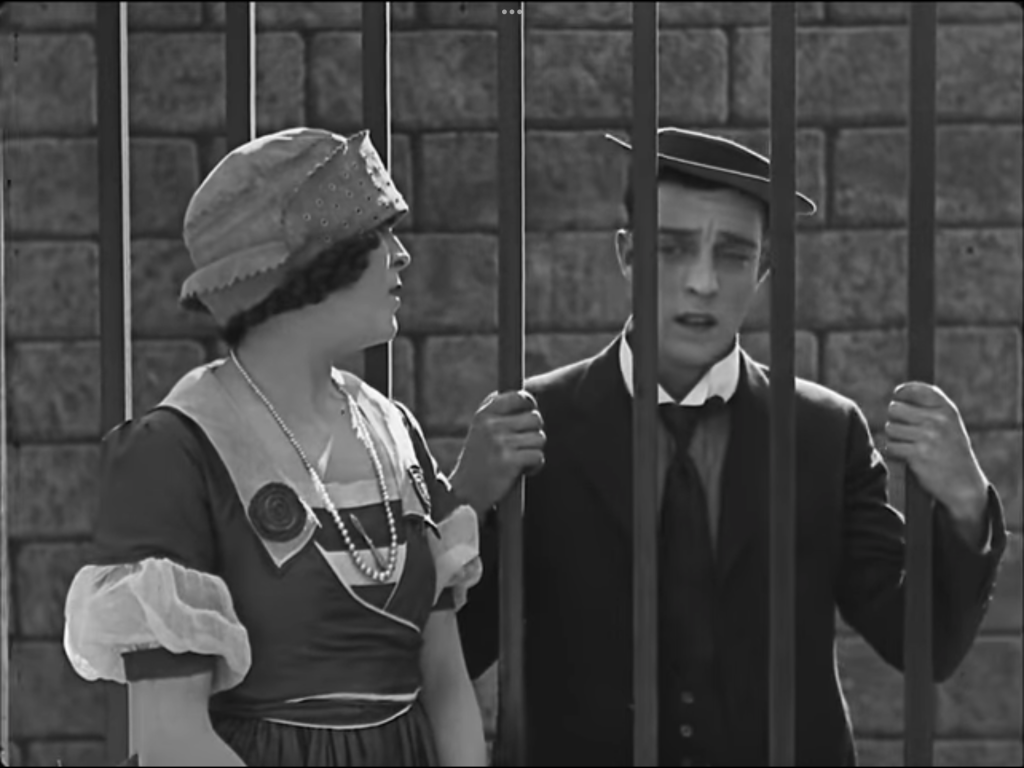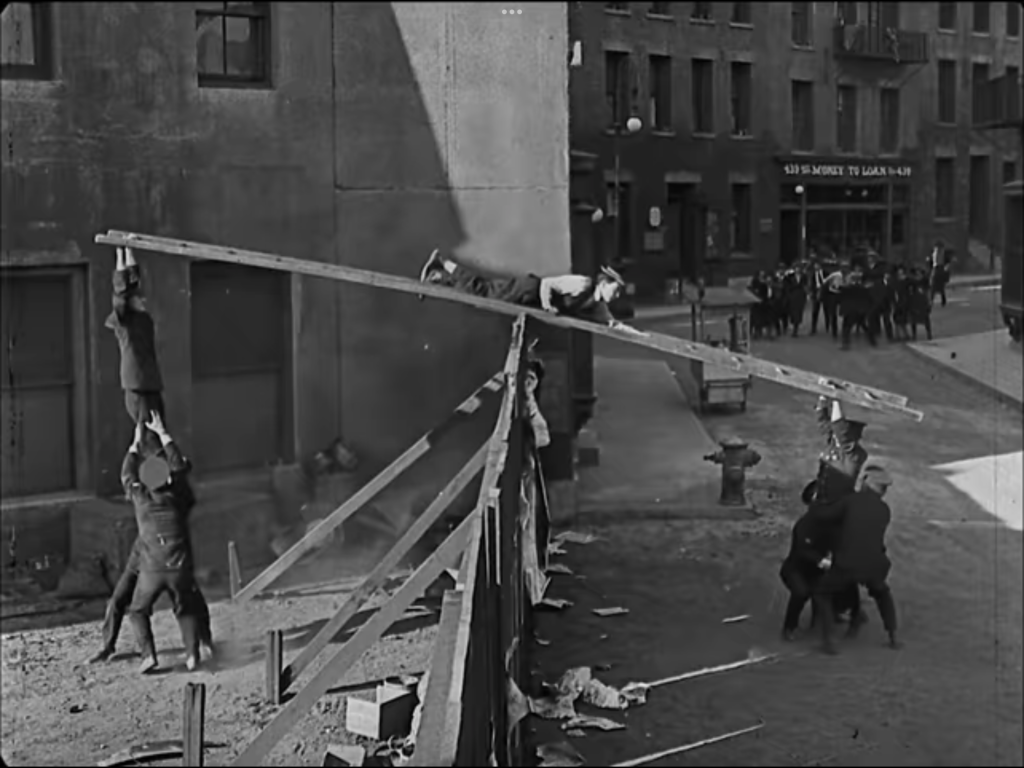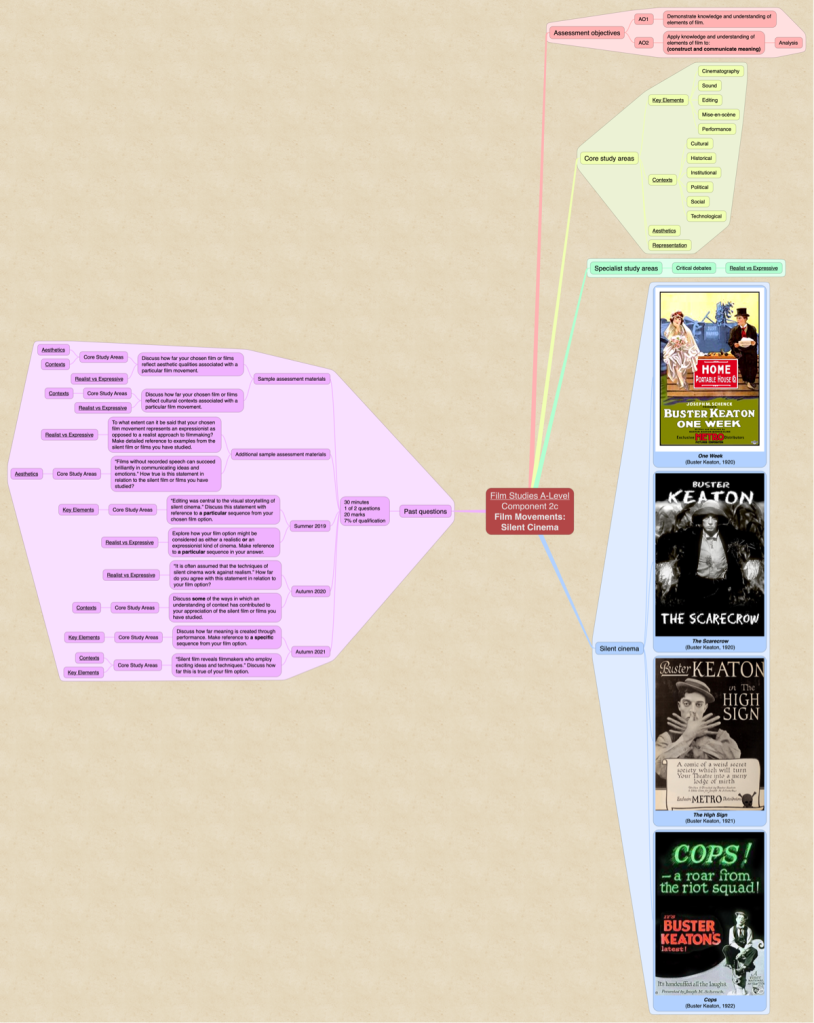Throughout Cops (1922), Buster Keaton employs elements of both realist and expressive styles of filmmaking, in order to create comedy in the most effective means possible.
Realist
- The film is shot on location, depicting the bustling streets of Los Angeles near the film studio.
- The costume design seen throughout is an accurate representation of the time period, being evocative of the 1920s.
- The film was produced during the proceedings of Fatty Arbuckle’s rape-and-murder trial. Being a silent star of the 1910s who brought Keaton into the limelight, it was clear that Keaton certainly had this on his mind as the film developed. Throughout the film, his character never comes out on top (despite his good intentions), police are presented in an extremely negative light, he does not ‘get the girl’ and his death is implied through the end card. This illustrates a sense of hopelessness over the duration of the film.
- The opening long take of Keaton behind bars is a static wide shot, allowing the viewer to freely direct their attention between Keaton and Virginia Fox. Keaton is displayed as being ‘locked out’ from the upper class.
- Keaton has a brief encounter with a man on the side of the road pretending to be kicked out by his wife, which could be considered a realist scenario.
- Keaton uses a long take to display the two characters loading the furniture onto the carriage, utilising deep focus so that the viewer is able to direct their attention between both characters.
- Keaton’s insolent behaviour towards the policeman depicted throughout the film is representative of America’s disrespectful attitude towards authority.
- ‘Gland larceny’ is briefly referenced when Keaton is seen taking his horse to a goat gland specialist. During the year of release, at least three men in America fell victim to testicle theft. Here, Keaton is referencing a real event that audiences would’ve been aware of in a light-hearted manner.
- A multitude of long take wide shots display an overwhelming number of policeman, allowing the viewer to be in awe of the intimidating force.
- Keaton smokes a cigarette as he rides into the police procession, demonstrating the popularity of tobacco in America.
- The seesaw gag is filmed with a long take long shot with deep focus, allowing us to focus on both the seesaw in the foreground and the policemen in the background.
- As previously mentioned, the ending of Cops is much darker in tone and, arguably more realist too. Keaton is rejected by Fox and death is implied through the end card.

Expressive
- The alliterative opening intertitle (“love laughs at locksmiths”) is accompanied by an expressive illustration of Cupid shooting a lock. Houdini’s quote naturally transitions into the opening scene of the film, establishing the premise.
- The opening shot of the film is particularly interesting, as Keaton’s clever framing allows the audience to believe that he is physically trapped behind bars, foreshadowing the later events. In reality, Keaton’s character is metaphorically ‘locked out’ from his girlfriends’s family, who represents the upper class.
- A brief but hyperbolic slapstick exchange involving a wallet is unrealistic, but creates humour.
- A closeup of the man sitting on the curb displays his highly exaggerated, superficial expression. This example of the Kuleshov Effect informs us of his devious intentions.
- A fade to black signifies the passage of time, after which the furniture is loaded onto the carriage.
- As the vase is unable to fit in the suitcase, Keaton’s clumsiness leads a piece breaking off in order for it to fit. This expertly sets up the next gag of the other vase falling off the carriage, creating a comical punchline.
- Keaton uses a boxing glove to serve as a makeshift indicator, as to not be bitten by a dog. This exaggerated mise-en-scène creates absurdist comedy. Keaton proceeds to punch a policeman with the same glove, demonstrating slapstick humour.
- An iris closeup of the Goat Gland Specialist sign focuses our attention towards the absurdly comical service.
- An intertitle contextualises the ensuing events of the police parade for the viewer.
- Parallel editing is incorporated between Keaton on his horse and the police parade, manipulating the viewer into believing that the events are occurring simultaneously .
- Keaton continues to use expressive mise-en-scène through the use of the bomb prop which is a highly stereotypical depiction of an explosive. Through a closeup of the bomb, the viewer’s emotions are manipulated as they anticipate the bomb’s explosion.
- As the chase between Keaton and the policeman ensues, fast motion is employed by Keaton in order to hyperbolise the situation for comedic effect. His use of elaborate choreography and blocking accentuates the ambitious set piece. The sheer amount of homogenous policemen in once place heightens the effect of the gag.
- The pace of editing quickens as the events of the chase become increasingly hectic.
- The water that spurts from the fire hydrant is comically vigorous and highly exaggerated.
- Keaton is able to contort his body into a small chest effortlessly which heightens the absurdity of the situation.
- The elaborate seesaw gag plays with balance, symmetry and framing in order to provide a daring visual spectacle. Keaton proceeds to fly through the air, further reinforcing the absurdity of the situation.
- Keaton’s small figure starkly juxtaposes the overwhelming congregation of policemen as he is chased through the streets. Keaton’s athleticism is reinforced as he slides under one of the policemen’s legs.
- The final shot of the film depicts a gravestone, unrealistically emblazoned with ‘THE END’. Keaton’s pork pie hat is propped up against it, signifying his apparent death at the end of the film.




You must be logged in to post a comment.